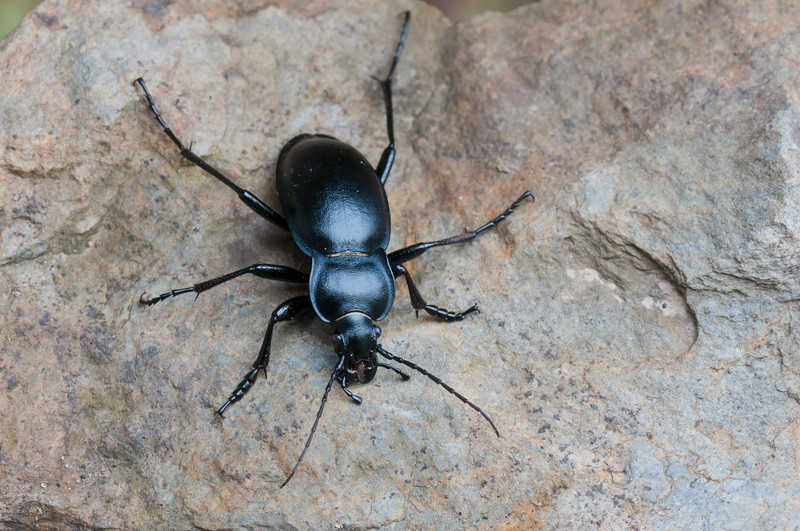Ground beetles are beneficial insects.
Adult ground beetles and their larvae eat asparagus beetles, caterpillars, Colorado potato beetles, corn earworms, cutworms, cabbage root maggots, Gypsy moth larvae, slugs, snails, squash vine borers, and tobacco budworms. A single ground beetle larva can eat more than 50 caterpillars. Adults hunt their prey in the soil and on plants and trees.

There are more than 2,500 species of ground beetles in North America and more than 40,000 species of ground beetles worldwide.
The scientific name of the ground beetle is Calosoma scrutator.
How to identify the ground beetle
The ground beetle is a shiny hard-shelled insect about ⅛ to 1½ inches long. Most ground beetles are dark-colored, black, or bronze, but some are metallic green, blue, gold, or red. They have a narrow heads with threadlike antennae and sometimes can be mistaken for cockroaches. Larvae are dark brown or black grubs with 10 segments tapering toward the rear.
Most ground beetles have large mandibles to capture their prey. Ground beetles are very quick when they move to capture prey.
Ground beetle life cycle
Female ground beetles lay eggs in the soil. The larvae hatch and feed on soil-dwelling pests for two to four weeks then pupate in the soil. Adults overwinter in the soil and emerge again in the spring. There is one generation of ground beetles each year. Ground beetles can live for several years.
How to attract ground beetles to the garden
Ground beetles are not attracted to the garden by specific plants, but a diversity of perennial plants will give them places to hide and find food. Ground beetles feed at night and hide under boards, rocks, tree bark, and garden debris during the day. You can encourage ground beetles by providing shelter.
Related articles:
Vegetable Garden Organic Pest Control
Vegetable Garden Beneficial Insects
Vegetable Garden Diseases Problem Solver
Vegetable Garden Organic Weed Control
Garden Planning Books at Amazon:
- Vegetable Garden Almanac & Planner
- Kitchen Garden Grower’s Guide Vegetable Encyclopedia
- Vegetable Garden Grower’s Guide
- Tomato Grower’s Answer Book















